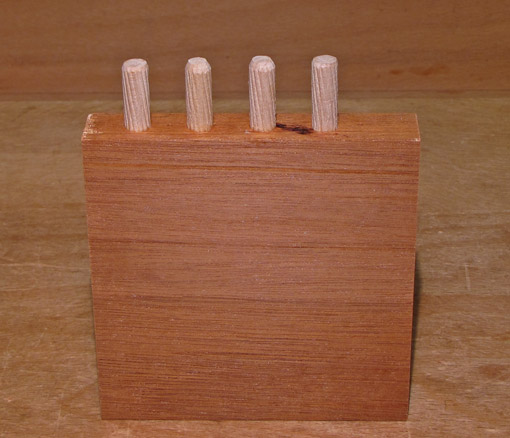
Finally, let’s look at the most doubtful part of the joint which is the adherence of the round dowel surface to the end grain portion of the hole.
This time, 5/16″ diameter Laurier dowels were inserted 3/4″ into holes drilled with a brad point bit in mahogany to again mimic the face grain side of the dowel joint. After drying, some of the samples were cut with an orientation to to primarily examine adhesion to the end grain portion of the hole – see the three pieces on the left in the photo below. The two pieces on the right are oriented to primarily examine adhesion to the side grain portion of the hole.
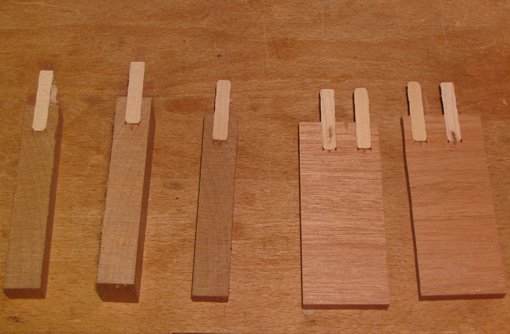
The dowels were smacked as described in the first post. The results shown are typical of several trials and they look good – the dowels adhere well to the end grain part of the hole, as seen in the first two photos below. For comparison, the next two photos show side grain and, from a separate trial, long grain adhesion.
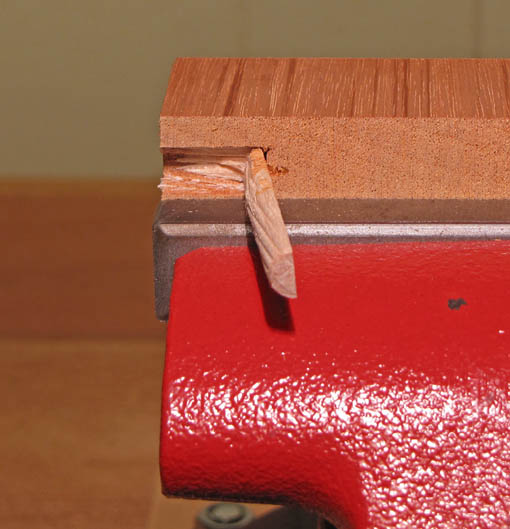
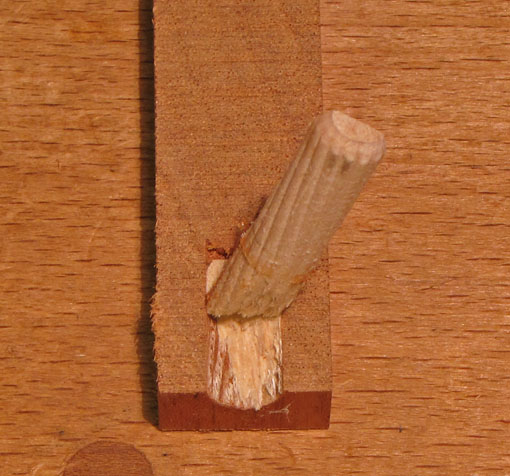
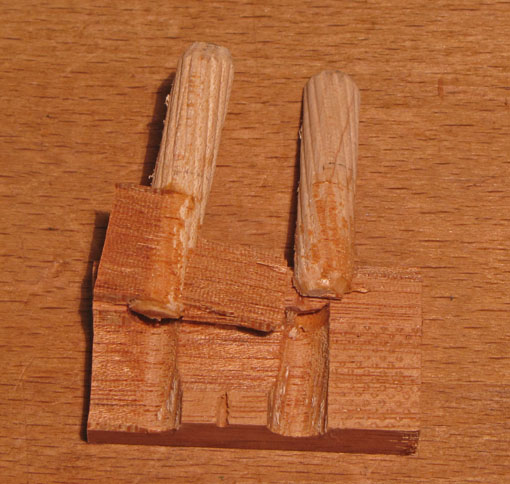
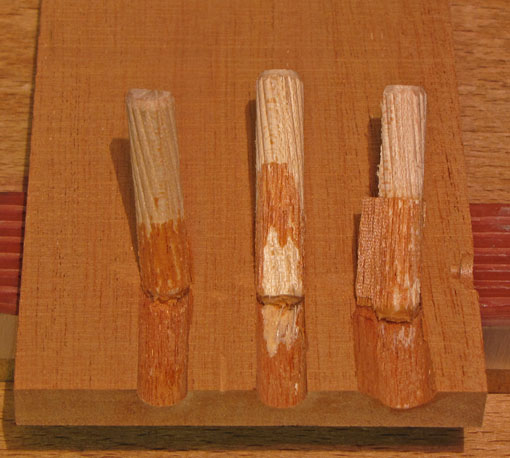
This methodology is far from perfect. What is really demonstrated in many of the samples, essentially, is that the half joints are stronger than the half dowels. It does, nonetheless, give some sense of what is going on inside those holes with dowels glued into them. While not a joint strength test and certainly not scientific, this gives some insight into the behavior of the components of dowel joinery.
All in all, I am not surprised that in the test of the real world, the dowel joinery in my cabinets has held up well. Furthermore, these little experiments will help me proceed more knowledgeably building future projects, and I hope they will help you with your work.


Interesting test and a good read.
Perhaps dowels get bad press because of the steps involved to use them when compared to cutting a biscuit or using a domino?
You mentioned in part one using a Krenov style jig, what’s it look like?
Patrick,
Thanks for the comment.
Yes, Krenov-style doweling does take considerable set up, but the good part is that you do not need special machines such as a biscuit joiner or Domino.
I’ll post photos of some jigs I’ve made but in the meantime Krenov’s Fine Art of Cabinetmaking and Fine Woodworking magazine #208 show examples.
Rob
I only have the Cabinetmaker’s Notebook at the moment but I do have issue 208 sitting in a pile of magazines so I’ll look at that.